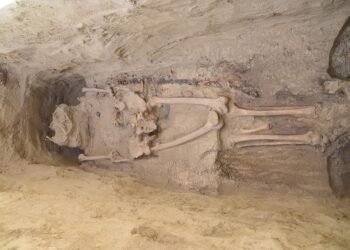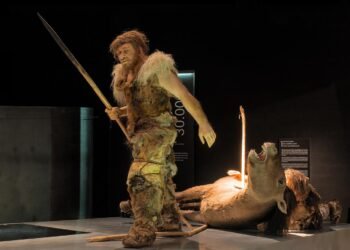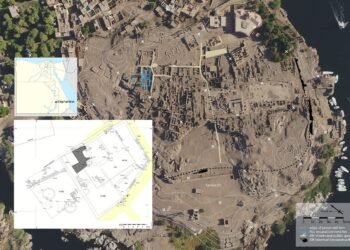In a groundbreaking archaeological discovery, two long-hidden medieval cities along the ancient Silk Road trade routes in the mountains of Uzbekistan have been revealed using advanced drone-based lidar technology.

The research, led by Michael Frachetti, professor of archaeology at Washington University in St. Louis, and Farhod Maksudov, director of Uzbekistan’s National Center of Archaeology, focused on two high-altitude urban centers, Tashbulak and Tugunbulak. Located approximately 2,000 meters above sea level, these cities thrived between the 6th and 11th centuries, demonstrating that mountainous regions, often considered obstacles to trade, were in fact bustling hubs of economic and cultural activity.
The project, which began in 2011 with the discovery of Tashbulak and expanded in 2015 to include Tugunbulak, was greatly enhanced by technological advances in drone-lidar mapping. Lidar, or light detection and ranging, enabled the team to capture high-resolution images of the cities’ layouts, revealing intricate details such as fortresses, plazas, roads, and residential structures, all hidden beneath centuries of erosion and grasslands.
“We were quite surprised when the imagery was compiled since the high resolution reveals so much about the structure of the cities and with such clarity,” Frachetti told NBC News. The detailed maps uncovered more than 300 structures in Tugunbulak, including watchtowers, defensive walls, narrow corridors, and a central fortress, which researchers believe was part of a larger palace or citadel complex. The smaller city of Tashbulak covered 12 hectares and featured terraced platforms and defensive structures.
Tugunbulak, the larger of the two, spanned 120 hectares, making it one of the largest medieval cities in the region. According to Maksudov, the people of Tugunbulak were nomadic pastoralists who had developed a distinct political and economic culture, differing significantly from the sedentary lowland populations.
“These would have been important urban hubs in Central Asia, especially as you moved out of lowland oases and into more challenging high-altitude settings,” Frachetti said. Contrary to previous beliefs, the mountainous terrain did not serve as a barrier to trade but was instead a critical part of the Silk Road’s network. “The mountains were home to major centers for interaction. Animals, ores, and other precious resources likely drove their prosperity.”
Frachetti’s team used lidar technology to create some of the highest-resolution images of archaeological sites ever published, providing unprecedented views of the cities’ architecture and organization. “These high-altitude cities acted as nodes in a network that moved power and trade through Asia and Europe,” Frachetti explained to Nature. The discoveries challenge earlier assumptions that major trade routes avoided mountainous areas.
Radiocarbon dating indicates that both cities declined in the first half of the 11th century, likely due to political divisions and environmental factors. The surrounding forests, vital for fuel and metal production, may have been over-exploited, contributing to the settlements’ eventual abandonment. Excavations since 2022 have revealed evidence of large-scale iron production at both sites, indicating that metalworking played a significant role in their economies. These cities likely produced steel and other valuable goods that were traded along the Silk Road.
Though excavation work continues, Frachetti and his team believe that Tugunbulak and Tashbulak were more than just remote outposts or rest stops. The researchers hope to expand their work to uncover other high-altitude settlements along the Silk Road, potentially reshaping the map of urban development in medieval Asia.






















